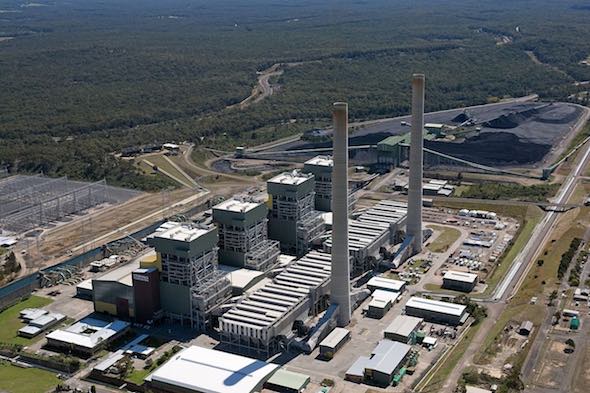Global funds giant Brookfield, the likely new owner of Australian utility Origin Energy, has pushed back against proposals by the new NSW Labor government to keep the Eraring coal plant open for an extended time, and even to buy it back and put it into public ownership.
Mark Carney, the chair of Brookfield Asset Management, which has board approval from Origin for an $18.7 billion buyout from the consortium it leads, and grand plans to spend $20 billion on wind, solar and storage over the next seven years, says keeping Eraring open is not consistent with climate targets.
Eraring is Australia’s biggest coal generator at 2.88GW, and is currently schedule to close in August, 2025, but its future has become subject to fierce debate since the election of the state Labor government, which has proposed buying it back from Origin and keeping it operating for an extended period.
This has raised considerable concerns in the market, because of the signals it would send to investors, and for its impact on emissions reductions and climate targets. It is starting to emerge as one of the key moment in Australia’s green energy transition.
Some expect one or two Eraging units to be kept open for another summer if insufficient new renewable and storage capacity is built, a point underlined by Carney, a former governor of the Bank of England, and one of the highest profile advocates of a rapid clean energy transition.
“We are not going to shut down, roaring until we have built the renewable and storage capacity and it’s in operation such that we can responsibly do that,” Carney said in an interview on ABC TV’s 7.30 report.
“But let me make two points. One is that we shouldn’t kid ourselves about extending lines of coal plants that are aged that require capital expenditure in the status quo. This is not the option there’s money that needs to be spent. The best place to spend the money is on the actual transition.”
And, he added later:
“Just to be absolutely clear, there is no way for Australia to achieve its climate objectives if Eraring continues to operate as a central part of generation for any longer than it should.”
Carney’s focus on the pushing the transition, while ensuring the lights stay on is a subtle and important difference between the new NSW government, which is focusing on keeping the lights on, and maintaining climate targets if that is still possible.
New energy minister Penny Sharpe has said repeatedly in week since her appointment that “all options” are on the table, including a buyout, and has resorted to old conservative catchphrases such as “when the wind don’t blow and the sun don’t shine” to explain the need to keep it online.
“The issue here with Eraring is that we need to make sure that the lights stay on in NSW,” Sharpe told reporters on Monday. “That’s my number one job and the job of the Minns Labor government/
“We have said that all options are on the table as we make the transition, so we’re not saying that we’re going to be closing it down in 2025.”
Sharpe’s comments came in the same week that NSW launched a key tender for 380MW or more of “firm capacity” with at least two hours storage, to help fill a gap identified by the market operator when Eraring closes.
The tender is unique in that it is the first time that demand management (when big energy users like smelters dial down their consumption to free up supply elsewhere) is being invited to fill in a big gap in such a way.
The tender is likely to be a competition between demand management and battery storage, given the timeline and the emphasis on low or zero emissions technology.
Sharpe has inherited the energy portfolio from the Coalition’s Matt Kean, who masterminded the state’s renewable infrastructure plan that seeks a path to replace the ageing and unreliable coal generators within a decade, and which has become something of a blueprint for the rest of the country.
NSW Labor, however, while ostensibly supportive of the roadmap – which will result in twice-yearly auctions for wind, solar and storage capacity that has already begun – has focused more on the potential negatives of the transition rather than the advantages.
Carney, however, says the problem is that current market and policy designs are not fit for purpose for the needs to switch to clean power, and it is clear that renewables and storage offers the path to cheaper, reliable and cleaner power, not propping up the current system.
“The current system doesn’t work. It’s not fit for purpose,” Carney said. “It is not just about climate and includes on issues of energy security, it is also affordability so we need to move.” The energy crisis prompted by the Russian invasion of Ukraine and the soaring price of fossil fuels imply underlined this.
“I think governments have recognised …. virtually without exception … that this underscores the deficiencies of the system we have and it has absolutely accelerated the transition towards a more sustainable and reliable system.”









